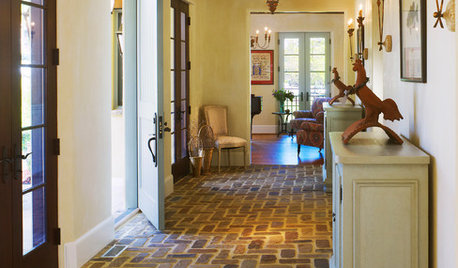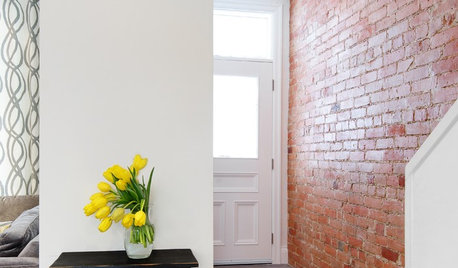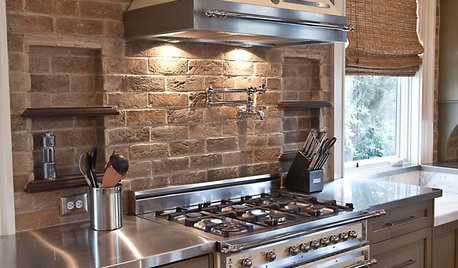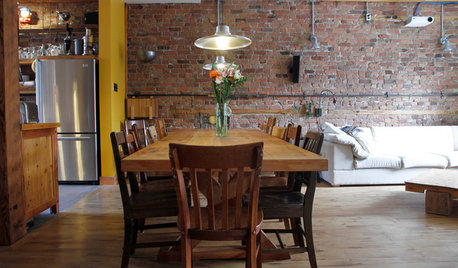basement brick entry- water elimination?
fausonk
16 years ago
Related Stories

RUSTIC STYLEBrick Floors: Could This Durable Material Work for Your House?
You love the old-world look, but will you like the feel of it underfoot? Learn the pros and cons of interior brick flooring
Full Story
HOUSEKEEPINGProtect Your House From Winter Water Damage
Avoid costly repairs by learning to spot potential problem areas before water damage is done
Full Story
LANDSCAPE DESIGNHow to Move Water Through Your Landscape
Swales, underground pipes or a mix of both: There’s more than one way to distribute water in the garden
Full Story
LANDSCAPE DESIGNGet Along With Less Lawn — Ideas to Save Water and Effort
Ditch the mower and lower your water bill while creating a feast for the eyes with diverse plantings and gathering places
Full Story
GREAT HOME PROJECTSHow to Switch to a Tankless Water Heater
New project for a new year: Swap your conventional heater for an energy-saving model — and don’t be fooled by misinformation
Full Story
DECORATING GUIDESWhat You Need to Know Before Painting Brick
Sure, painted brick can be a great look. But you need to take some risks into account. Here's how to paint brick like a pro
Full Story
BRICKHow to Make an Interior Brick Wall Work
Learn how to preserve, paint, clean and style a brick wall to fit your design scheme
Full Story
KITCHEN DESIGNYes, You Can Use Brick in the Kitchen
Quell your fears of cooking splashes, cleaning nightmares and dust with these tips from the pros
Full Story
HEALTHY HOMEWhat to Know About Controlling Dust During Remodeling
You can't eliminate dust during construction, but there are ways to contain and remove as much of it as possible
Full Story
ECLECTIC HOMESMy Houzz: Ecofriendly and Salvaged Style in a Montreal Triplex
Repurposed materials, graywater reuse, and no-VOC paints make for a resourcefully earth-friendly home in Quebec
Full StoryMore Discussions











User
fausonkOriginal Author
Related Professionals
Piedmont Kitchen & Bathroom Designers · Saint Peters Kitchen & Bathroom Designers · South Farmingdale Kitchen & Bathroom Designers · Beachwood Kitchen & Bathroom Remodelers · 20781 Kitchen & Bathroom Remodelers · Calverton Kitchen & Bathroom Remodelers · Ewa Beach Kitchen & Bathroom Remodelers · Lynn Haven Kitchen & Bathroom Remodelers · Mesquite Kitchen & Bathroom Remodelers · Schiller Park Kitchen & Bathroom Remodelers · Tuckahoe Kitchen & Bathroom Remodelers · Tulsa Kitchen & Bathroom Remodelers · Forest Hills Kitchen & Bathroom Remodelers · Central Islip Architects & Building Designers · Taylors Architects & Building DesignersUser
fausonkOriginal Author
User
s_anthony
growlery